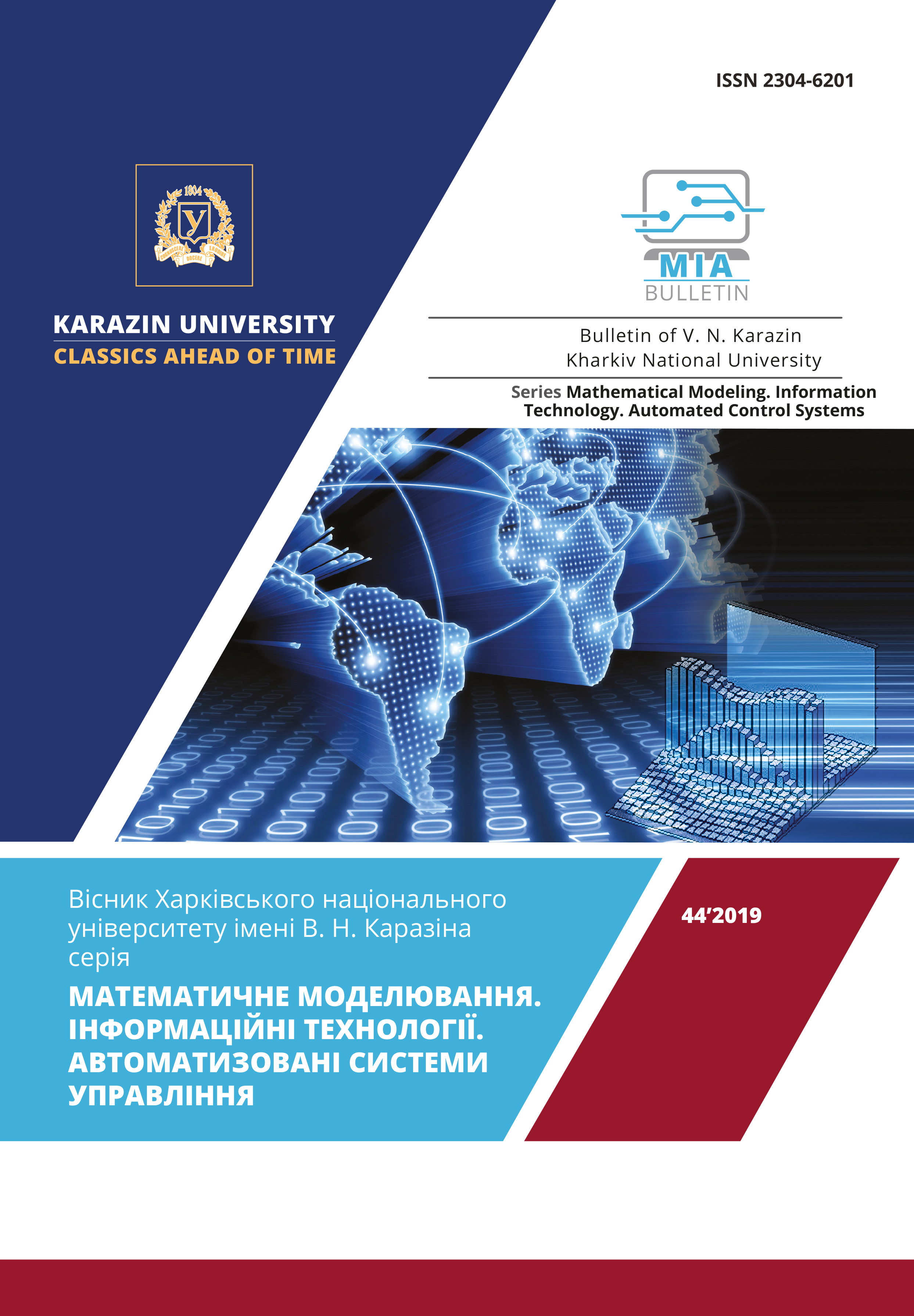Sensor node for wireless radiation monitoring network
Abstract
The structure of a sensor node for wireless network for environmental radiation monitoring is described in the article. The sensor node is developed on the base of semiconductor detector, modern microprocessor technology, and a last-generation telecommunications radio module. A new algorithm for measuring the power of the exposure dose of ionizing radiation has been investigated in the article. The amount of ionizing radiation energy absorbed by the human body affects the degree of radiation damage to its functional organs radically. In order to solve this problem we are working on improving the parameters of detectors, as well as the characteristics of electronic modules of detecting systems and creating software for controlling the detection process, collecting and processing information digitally, and presenting it properly to users in online mode. A wireless sensor network (WSN) is a distributed, self-organizing network of multiple sensors (sensors, motors, etc.) containing "Motes" (a specks of dust), so named because of the tendency to miniaturization and Executive devices combined with each other through the radio channel. The coverage area of such a network can range from several meters to several kilometers due to the ability to relay messages from one element to another. The motes usually contain battery-powered autonomous microcomputers (controllers) and transceivers. That allows the motes to self-organize into specialized networks, communicate with each other and exchange data. The role of human changes significantly in the model of sensor networks, since their elements – sensor microcomputers – become much more independent, often anticipating human requests long before they are received. "Homocentric" model of network computing with a human as a central link belongs to the past − a human moves from the center to the periphery and concentrates on the process managing, becoming a kind of an intermediary between the real world and computers.
Downloads
References
/References
Applications of wireless sensor networks, URL: http://wireless.ictp.it/ wp-content/uploads/2012/02/WSN-Applications.pdf(Last accessed: 20.01.2020)
NI Wireless Sensor Network (WSN) Application Areas, National Instruments, URL: http://www.ni.com/wsn/applications/(Last accessed: 20.01.2020)
G. Vellidis. Wireless Sensor Network Applications in Agriculture, TransAtlantic Precision Agriculture Consortium, URL: http://agri-sensing. technion.ac.il/Lectures%20PDF/PA/Vellidis%20Wednesday.pdf (Last accessed: 20.01.2020)
K. Sha, W. Shi, O. Watkins. Using Wireless Sensor Networks for Fire Resсue applications: Requirements and Challenges, URL: http://www.cs.wayne.edu/~weisong/papers/sha06-firenet.pdf (Last accessed: 20.01.2020)
Wireless industrial monitoring. Smart systems based on sensor networks, URL: http://www.ipmce.ru/img/ release/is_sensor.pdf . (Last accessed: 20.01.2020) [in Russia]
Benzac O. V. Methods and system for spectrometry of ionizing radiation and radiation safety monitoring based on semiconductor detectors of the new generation. The dissertation on competition of a scientific degree of doctor of technical Sciences. Odessa, 2016. 28–31p.[in Russia]
Zakharchenko A. A. Modeling of dosimetric properties of gamma radiation detectors based on high-resistance semiconductors. Dissertation for the Cand. Phys. - Mat. sciences. Kharkiv, 2009 563p. [in Russia]
Zakharchenko A. A. Modeling of the energy dependence of the sensitivity Of CdTe (CdZnTe) gamma radiation detectors A. A. Zakharchenko, D. V. Nakonechny, I. N. Shlyakhov, A.V. Rybka, V.E. kutniy, M. A. Khazhmuradov Technology and design in electronic equipment. - 2007. - No. 1. - Pp. 28-31. [in Russia]
Applications of wireless sensor networks, URL: http://wireless.ictp.it/ wp-content/uploads/2012/02/WSN-Applications.pdf (Last accessed: 20.01.2020).
NI Wireless Sensor Network (WSN) Application Areas, National Instruments, URL: http://www.ni.com/wsn/applications(Last accessed: 20.01.2020)
G. Vellidis. Wireless Sensor Network Applications in Agriculture, TransAtlantic Precision Agriculture Consortium, URL:http://agri-sensing. technion.ac.il/Lectures%20PDF/PA/Vellidis%20Wednesday.pdf (Last accessed: 20.01.2020)
K. Sha, W. Shi, O. Watkins. Using Wireless Sensor Networks for Fire Resсue applications: Requirements and Challenges, URL: http://www.cs.wayne.edu/~weisong/papers/sha06-firenet.pdf(Last accessed: 20.01.2020)
Беспроводной промышленный мониторинг. Интеллектуальные системы на базе сенсорных сетей, URL: http://www.ipmce.ru/img/ release/is_sensor.pdf . (Last accessed: 20.01.2020)
Банзак О. В. Методы и системы спектрометрии ионизирующих излучений и контроля радиационной безопасности на основе полупроводниковых детекторов нового поколения. Диссертация на соискание научной степени доктора технических наук. Одеса, 2016. с28–31.
Захарченко А.А. Моделирование дозиметрических свойств детекторов гамма излучения на основе высокоомных полупроводников. Диссертация на соискание канд. физ. – мат. наук. Харьков, 2009.563с.
Захарченко А.А. Моделирование энергетической зависимости чувствительности CdTe (CdZnTe) детекторов гамма-излучения А.А. Захарченко, Д.В. Наконечный, И.Н. Шляхов, А.В. Рыбка, В.Е. Кутний, М.А. Хажмурадов Технология и конструирование в электронной аппаратуре. – 2007. – № 1. – С. 28–31.




